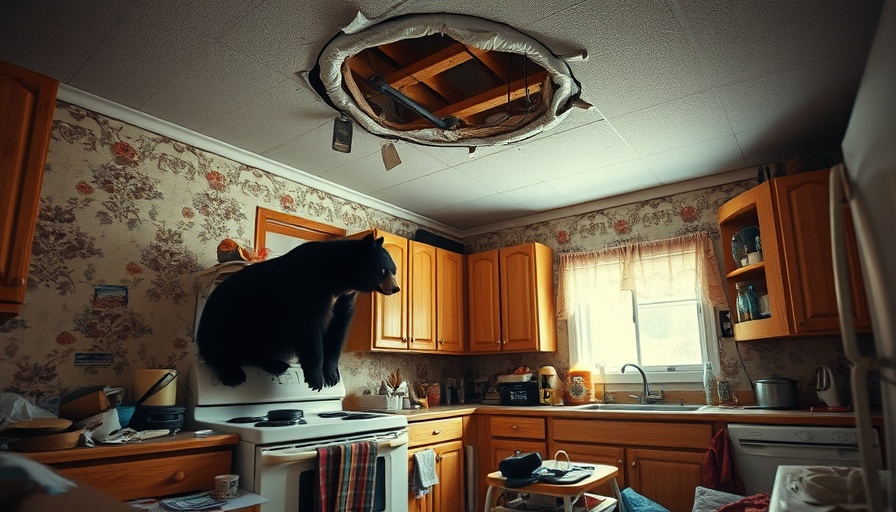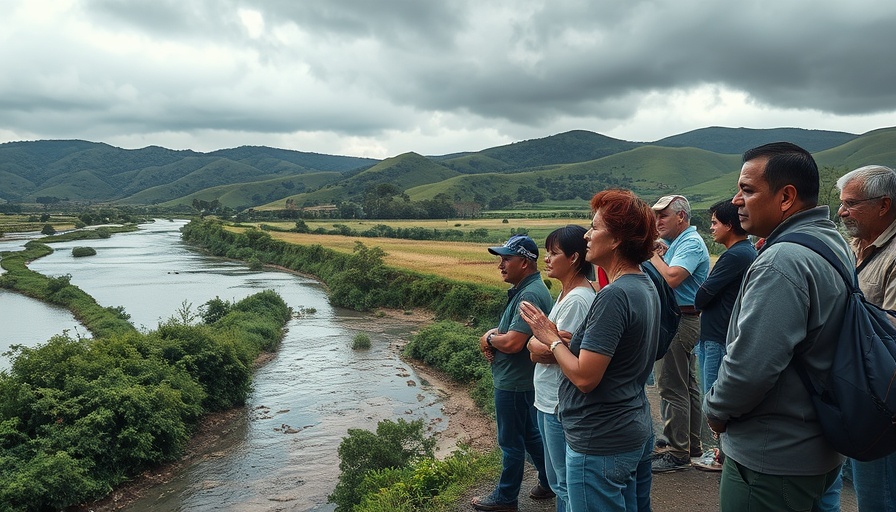
Unexpected Encounters: A Bear in the Kitchen
In a shocking incident in Kentucky, homeowners were jolted awake when a black bear crashed through their ceiling and onto their stove. Witnesses reported that the bear likely climbed a ladder and squeezed into the attic, where it lost its footing and came crashing down at breakfast time, making for quite the morning surprise. This unique event not only highlights the unpredictability of wildlife but also underscores the importance of safety in suburban areas bordering natural habitats.
Understanding Bear Behavior and Human Interaction
Bears are usually more afraid of humans than we are of them. Typically, they steer clear of human activity, yet with urban expansion into wildlife habitats, such encounters are becoming more common. Experts warn that as more people encroach on bear territory, incidents like this could increase, prompting both environmental and safety concerns.
The Science Behind Bear Intrusions
According to wildlife biologists, bears are opportunistic feeders; they search for food in places where it is easily accessible. This particular bear may have been on the hunt for food, which raises questions about food storage practices in homes adjacent to bear territories. Bear-proof containers or secure storage methods for garbage and pet food may help mitigate such occurrences in the future.
Safety Recommendations for Homeowners in Bear Country
Homeowners living near wildlife are encouraged to take preventive measures to avoid black bear visits. These include:
- Securing trash cans and compost bins to prevent attracting bears.
- Storing pet food indoors and cleaning up outdoor pet bowls after use.
- Investing in bear-proof fences when livestock is present.
- Educating children about bear safety and what to do if one is spotted nearby.
Being proactive not only protects homeowners but also helps promote a healthy coexistence between humans and wildlife.
The Growing Concern for Human-Wildlife Interactions
Incidents like the Kentucky bear crash serve as a reminder of the growing intersections between urban life and wildlife habitats. As urban areas expand and natural habitats shrink—often due to continued development—bears and other wildlife are forced to adapt to human environments. This shift not only raises safety issues but also brings to the forefront discussions about preserving wildlife habitats and promoting human understanding of wildlife behavior.
Future Predictions: Addressing Human-Bear Encounters
Experts predict that as climate change and urban development continue, wildlife encounters will likely become a more frequent topic of conversation among local governments and residents. Future policies may involve more robust wildlife management practices and education initiatives aimed at both the prevention of wildlife encounters and the promotion of safety measures.
In conclusion, the black bear’s unexpected visit serves as both a curiosity and a cautionary tale for Kentucky residents and others living in proximity to wildlife. Balancing human activities with respect for nature is essential as we navigate this shared space.
 Add Row
Add Row  Add
Add 




 Add Row
Add Row  Add
Add 

Write A Comment